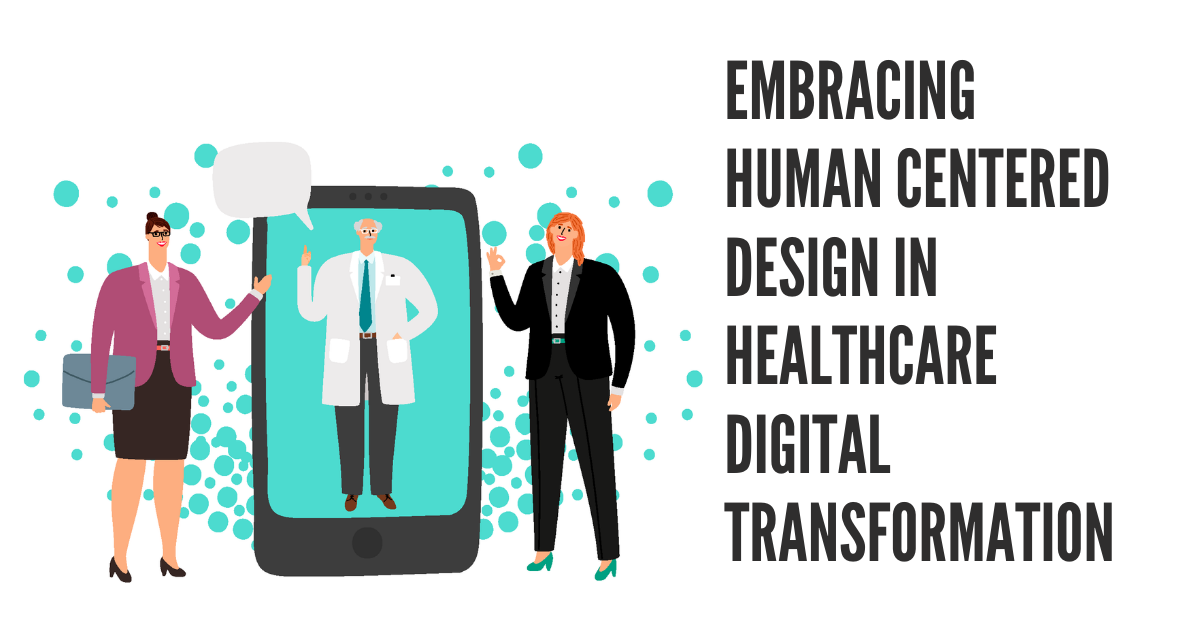Embracing Human Centered Design in Healthcare Digital Transformation

The HCI Group has discussed the topic of Digital Transformation extensively over the last year alongside our Chief Digital Officer, Ed Marx. In light of the current challenges our world is facing, now more than ever CIOs and CDOs across the country need to embrace digital transformation and implement it within their organizations. This week’s webinar session was joined by Amy Heymans, Founder and Chief Experience Officer of Mad*Pow, our partner company at The HCI Group. She proposed that often when considering our digital transformation strategies, we fall into the trap of thinking that it should be all about the technology.

Amy believes that design can help improve the human condition. It was with that mission and vision that she founded Mad*Pow in 2000 with Will Powley, and together they’ve created an award-winning agency that takes a purpose driven approach, partnering with clients to deliver social impact and financial return. There is a lot that can be learned from Amy and her experience in human centered design, which we believe is critical for a successful adoption of digital transformation.
What is human centered design?
Human centered design is the practice of taking a collaborative, inclusive approach to design. If you are designing a product or solution that will go on to be delivered at scale and impact the lives of many people, it is important not to do this in isolation and without considering those people. We should work with them and invite them to weigh in on the design process, so that we will increase the likelihood that the solutions, products and digital services that we are creating will add meaning and value to people’s lives.
How has Mad*Pow transformed since you started?
When we started 20 years ago, we were digital focused and user centered from the get-go, which led to a lot of business and growth to us. A lot of companies were new to the digital game, and we looking to invent new digital products and explore new spaces. We started in technology finance and then moved into the health industry about 15 years ago. We had done a project where we developed a product to help people find relevant health information, and saw the huge impact that research with real human beings could make within this industry. It had the potential to help heal and comfort people who are navigating through this information for themselves and give them an improved experience and outlook. As such, we concentrated our efforts on helping our health clients focus on improving their service by being more human centered in their digital design and approach.
Is human centered design still a somewhat new concept within healthcare?
Whilst human centered design is still a new concept within healthcare, but put simply – the digital experiences that an organization puts out to the public need to be as good as the experience they have when interacting with a company like Amazon. There is a modern consumerism that people have become accustomed to and the health industry receives a lot of criticism for being behind on meeting these new expectations. Whilst I believe that health is ahead in terms of empathy and consideration of the consumer, they are behind in terms of technology. We believe this is mostly a result of technology design and implementation being engineering led instead of focusing its development on user experience and requirements.
What human centered design offers is a highly inclusive and collaborative process where we talk with all the people who are affected by a solution, from stakeholders, caregivers, family members and patients. We endeavour to understand the needs, wants and expectations of the end user. Following on from this research and collaboration, we then figure out how to meet those needs through both a digital and human touch. All of this is dependent on culture and behavioural change inside an organization, which is an important step for any solution development. For a product, solution or digital service to be successful, users need to believe in it, find use in it and engage with it.
Could you provide a practical example of how human centered design has helped an organization?
Mad*Pow worked with Dartmouth Hitchcock Medical Center during their launch of ImagineCare, a subsidiary built with the hypothesis of “what would happen if care was delivered outside of the four walls of the hospital in the places where people live”. What would a hospital be like if it didn’t want people to visit? With COVID now we understand the importance of being able to connect with caregivers from their homes, but this was quite a new and theoretical concept for the industry at the time.
The solution for ImagineCare was focused on chronic health condition management, such as asthma, diabetes, hypertension, COPD and congestive heart disease. Their patients would receive a smartphone connected to biometric sensing devices for their conditions, such as blood pressure cuffs for hypertension etc. Patients were able to take their own measurements every day and upload to the cloud. If any data point was a cause for concern, the patient would receive a call within two minutes and could securely connect with their care team at any moment. The solution received a 95% satisfaction rating and patients noted that they no longer felt alone and that they felt someone had their back at all times. Unnecessary visits to the ER were subsequently avoided and it also reduced costs of managing the program population by 20%. The project was a tremendous success and fundamentally it leveraged human centered design from the offset. We involved real patients and real people within our research and development, as such leading to its widespread acceptance from users.
